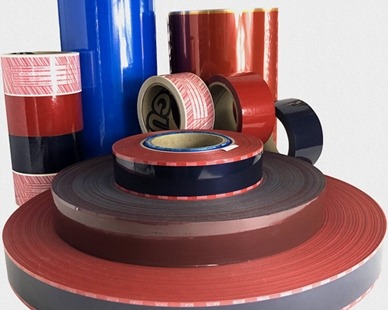The year 2022 was unpredictable and 2023 will likely follow suit. That’s all the more reason to pay attention to the trends that will shape the packaging industry in the foreseeable future. Here’s what to expect.

Top 5 Packaging Trends for 2023
- 1. Finding strategies to cope with the looming recession
- 2. Cutting through the greenwashing
- 3. Accepting supply chain disruption as the new normal
- 4. Smart packaging is getting smarter
- 5. Looking at tamper-evident packaging as a source of business growth
- Conclusion
1. Finding strategies to cope with the looming recession
Given the current economic uncertainty, businesses should anticipate consumer demand to drop and competition to intensify.
By utilizing packaging that prevents product tampering, brands can benefit from increased customer satisfaction, improved brand loyalty and an overall increase in profits.
Solutions such as tamper-evident security packing tape and tamper-proof poly mailers provide peace of mind to customers, reassuring them that their purchases are safe and secure. This in turn translates into a greater number of loyal customers and repeat business for the company.
Similarly, packaging wholesalers who want to keep their market share can set themselves apart from competitors by expanding their portfolios with innovative tamper-evident solutions.
2. Cutting through the greenwashing
Plastic packaging has been an environmental issue for years. As a result, many brands have attempted to market their plastic packing as ecofriendly, even though it may not actually be any better for the environment. It is quite likely that in 2023 more brands will be exposed for their greenwashing claims regarding plastic packaging.
Some studies have shown that most plastics marketed as compostable cannot be composted, especially when the onus to compost them is on the consumer or when the packaging materials contain more than one component that prevents the recyclability process.
If recycling plastic doesn’t work, then reducing the amount of plastic we use or replacing it with renewable packaging would be ideal, but it’s not always possible. There are instances when plastic is still the best material option.
Take the food industry, where plastic provides a large range of barrier properties, which can minimize the amount of food lost or wasted throughout the supply chain. This actually limits the enormous economic, social and negative environmental consequences of food waste.
Although consumers want to do their part, they’re increasingly aware that sustainability is a complex issue that cannot be boiled down to “plastic is evil.” It’s important to look at the consequences of packaging throughout the entire product lifecycle.
3. Accepting supply chain disruption as the new normal
Although the congestion that has plagued the shipping industry in the past year is now resolved, climate change events, ongoing labour shortages, China’s zero-COVID policy, the escalation of the war in Ukraine or any other unexpected event could further deteriorate the situation.
The difference, though, is that companies are now accepting supply chain disruption as the new normal.
As far as the packaging industry is concerned, there’s every reason to believe that protecting shipments within the supply chain and reducing inventory shrinkage in the warehouse should remain a top business priority in the foreseeable future.
4. Smart packaging is getting smarter
With the November 27 deadline fast approaching to meet DSCSA requirements, pharmaceutical companies and their partners are rushing to adopt labelling and packaging solutions that guarantee product integrity and authenticity throughout the supply chain. Their quest could accelerate innovation in smart packaging and, by extension, benefit other sectors.
There are so many prime examples of smart packaging enabling consumers to use their phone to obtain information about product quality, freshness and more. Using virtual reality (VR) and augmented reality (AR) technologies to create even more immersive experiences is the next logical step.
But beyond finding the next cool tech, forward-thinking brands will be looking at how they can optimally combine existing technologies to meet all their requirements. For instance, anti-counterfeiting packaging works best when it incorporates authentication and traceability features on top of preventing tampering.
5. Looking at tamper-evident packaging as a source of business growth
At its most basic level, packaging protects and promotes its contents. But economic uncertainty will challenge businesses to find new ways to remain competitive and drive growth.
Depending on the industry, that could mean offering innovative packaging solutions to edge out competitors, replacing existing packaging with more sustainable options, anticipating customers’ demand in growing markets or evaluating how new packaging solutions can either reduce costs or increase revenue.
Conclusion
With a recession looming on the horizon and supply chain disruptions becoming increasingly common, businesses must plan more strategically to stay nimble and think of using packaging as a source of business growth.
New and more stringent regulations and the evolution of smart packaging offer a wealth of opportunities for companies looking to combine the benefits of anti-counterfeiting and tamper-evident solutions.
Now the question is: How will you engage with your team, suppliers and clients to combine these trends into a successful strategy?